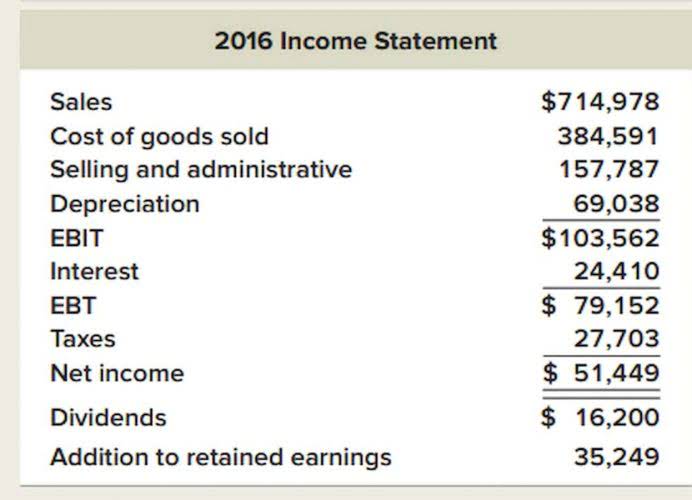How to Calculate the Present Value of Future Lease Payments

In our final section, we’ll perform “sanity checks” on our calculations to determine whether our assumptions were reasonable or not. The $425mm total enterprise value (TEV) was calculated by taking the sum of the $127mm present value (PV) of stage 1 FCFs and the $298mm in the PV of the terminal value (TV). By multiplying the $60mm in terminal year EBITDA by the comps-derived exit multiple assumption of 8.0x, we get $480mm as the TV in Year 5. Next, the Year 5 FCF of $36mm is going to be multiplied by the 2.5% growth rate to arrive at $37mm for the FCF value in the next year, which will then be inserted into the formula for the calculation. The exit multiple assumption is derived from market data on the current public trading multiples of comparable companies and multiples obtained from precedent transactions of comparable targets.

Present Value vs. Future Value: What is the Difference?
- One of the most common applications is in capital budgeting, where businesses assess the viability of long-term projects.
- Alternatively, the function can also be used to calculate the present value of a single future value.
- In the financial world, this is explained by the time value of money concept.
- How about if Option A requires an initial investment of $1 million, while Option B will only cost $10?
- The opposite of present value is future value (FV), which also uses a discount rate but projects into the future.
Now, the price for the immediate annuity will be less than the total payout of $100,000 to take this into account. The interest rate is called a discount in this equation because it represents the value lost when set payments aren’t increasing with the market. It’s what makes the $10,000 payment in year one worth more than the $10,000 payment in year 10. Let’s say you want to buy an immediate annuity and get a payment of $10,000 per year for 10 years.

Example 2 – Count the Present Value for a Periodic Payment
![]()
Present value of an annuity refers to how much money must be invested today in order to guarantee the payout you want in the future. You can use an annuity calculator to figure both the present and future value of an annuity, so long as you know the interest rate, payment amount and duration. It’s true that Bookkeeping for Veterinarians $100,000 in your pocket today is worth more than 10 payments of $10,000 over 10 years. However, this assumes you’ll invest the $100,000 and let it grow for 10 years. Depending on Mr. A Financial condition, risk capacity decisions can be made.
Is NPV or ROI More Important?

Using a lump sum from a pension or 401(k) to buy an annuity provides security that payments will last for a specified period or even for the rest of your life. Wolfram|Alpha can quickly and easily compute the present value of money, as well as the amount you would need to invest in order to achieve a desired financial goal in the future. Plots are automatically generated to help you visualize the effect that different interest rates, interest periods or future values could have on your result. The principal of the loan or investment is called the present value (latexPV/latex). The present value is the amount of money borrowed for a loan or the amount of money invested for an investment at the start of the term.
- In the IFRS 16 Illustrative examples, the calculation methodology is slightly different.
- It subsequently shows in two intuitive ways how infinite series of constant cashflows, so-called perpetuities, have finite present values if interest rates are positive.
- To be converted into a monthly interest rate, 7% will be divided by 12 (as done in the first argument where C3/C4).
- The assumptions listed below are to be used for the entirety of the exercise.
- Excel is a powerful tool that can be used to calculate a variety of formulas for investments and other reasons, saving investors a lot of time and helping them make wise investment choices.
How to calculate the present value of an annuity due

Since we have a monthly annuity, we can divide and multiply by 12 or by cell B6 in which this number pv value formula is entered. The pension provider will determine the commuted value of the payment due to the beneficiary. If you expect to have $50,000 in your bank account 10 years from now, with the interest rate at 5%, you can figure out the amount that would be invested today to achieve this.
- It’s true that $100,000 in your pocket today is worth more than 10 payments of $10,000 over 10 years.
- The default calculation above asks what is the present value of a future value amount of $15,000 invested for 3.5 years, compounded monthly at an annual interest rate of 5.25%.
- This row’s buttons are different in colour from the rest of the buttons on the keypad.
- Earlier cash flows can be reinvested earlier and for a longer duration, so these cash flows carry the highest value (and vice versa for cash flows received later).
- The word “discount” refers to future value being discounted back to present value.
Posts from: Time Value of Money in Excel
- Calculating the present and future value of an annuity can help you decide whether to buy an annuity or what to do with the one you already have.
- The time value of money buttons are located in the TVM row (the third row from the top) of the calculator.
- Let’s get started with the projected figures for our hypothetical company’s EBITDA and free cash flow.
- For frequent calculations, consider using Excel macros to automate the process.
Integrating AI into terminal value calculations ensures more precise, defensible valuations. This program provides a comprehensive framework for learning how to effectively apply https://visionoptional.com/revenue-streams-overview-examples-different-types/ AI tools to AI-driven financial strategies. The exponent, n, signifies the time horizon over which the future cash flow is expected. The longer the duration, the smaller the present value, as the money has more time to grow if invested today. This temporal aspect underscores the importance of timing in financial planning and investment decisions.










